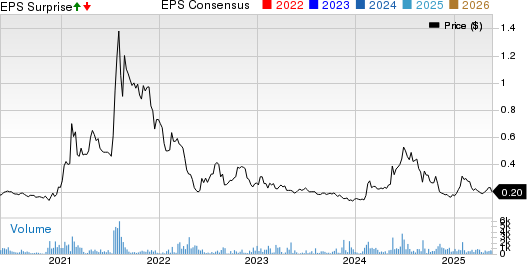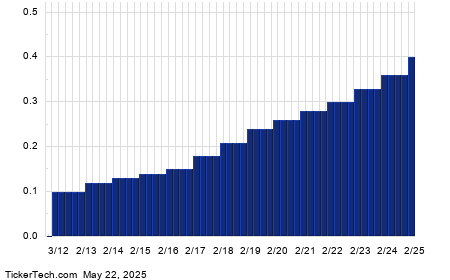Mixed Market Response as Bond Yields Shift Following Tax Bill Passage
The S&P 500 Index ($SPX) (SPY) finished Thursday down -0.04%, while the Dow Jones Industrial Index ($DOWI) (DIA) closed flat. In contrast, the Nasdaq 100 Index ($IUXX) (QQQ) saw a slight uptick of +0.15%. June E-mini S&P futures (ESM25) dropped -0.05%, whereas June E-mini Nasdaq futures (NQM25) increased by +0.12%.
On Thursday, stock indexes managed to recover from earlier declines, concluding the day mixed. Both the S&P 500 and Dow Jones reported 1-1/2 week lows. The markets faced downward pressure as bond yields rose following the passage of President Trump’s tax and spending bill through the House. This legislation aims to avert a year-end tax increase but risks significantly adding to the U.S. deficit. The Senate will now review the bill, with some Republican factions advocating for extensive amendments. A vote on the bill is anticipated by August. Concerns linger that this tax policy could contribute trillions in deficits amid a weakening demand for U.S. assets.
Investor sentiment has been negatively impacted this week by various factors. These include a trade war, last week’s downgrade of the U.S. credit rating by Moody’s, and an unfavorable budget deficit outlook in the Republican reconciliation bill. Both stocks and the U.S. dollar have faced challenges as the attractiveness of U.S. assets to foreign investors declines.
Despite these challenges, stocks began to recover from their early lows. This shift was partly fueled by a decrease in bond yields stemming from dovish comments made by Fed Governor Waller. He indicated that if tariffs on trade partners stabilize around 10% this summer, the Fed might consider rate cuts in the latter half of the year. Additionally, favorable U.S. economic data provided further support, revealing a drop in weekly jobless claims to a one-month low and an unexpected rise in the May S&P manufacturing PMI.
Specifically, U.S. weekly initial unemployment claims fell by 2,000 to a one-month low of 227,000, contrary to expectations that forecasted a rise to 230,000. The May S&P manufacturing PMI also rose by 1.9 points to 52.3, exceeding projections of a decrease to 49.9. However, April’s existing home sales dipped by 0.5% month-over-month, reaching a seven-month low of 4.00 million, disappointing views calling for an increase to 4.10 million.
In cryptocurrency, Bitcoin (^BTCUSD) surged over +2%, reaching a new record high as stablecoin legislation advanced in the Senate. Democrats in the Senate have dropped their opposition to the bill, which is currently being debated by a bipartisan group aiming for a quick passage this week.
Looking ahead, market participants will be focused on tariff updates and potential new trade agreements. The G-7 finance ministers and central bank governors are convening this week from Tuesday through Thursday in Braniff, Canada. Furthermore, Friday’s April new home sales are forecasted to decline by -4.7% month-over-month to 690,000.
The markets are currently pricing in a 5% chance of a 25 basis point rate cut at the Federal Open Market Committee (FOMC) meeting scheduled for June 17-18. As the first quarter earnings reporting season winds down, nearly 90% of S&P 500 companies have announced quarterly results. Among them, 77% surpassed estimates—the highest rate since Q2 of 2024. Q1 earnings growth stands at +13.1%, above the initial expectation of +6.6%. Meanwhile, full-year 2025 corporate profits for the S&P 500 are projected to rise by +9.4%, a decrease from earlier forecasts of +12.5% made in January.
Internationally, stock markets closed lower on Thursday. The Euro Stoxx 50 ended down -0.55%. China’s Shanghai Composite recorded a -0.22% decline, and Japan’s Nikkei 225 fell to a two-week low, finishing down -0.84%.
Interest Rates
June 10-year Treasury notes (ZNM25) gained +10.5 ticks on Thursday. The yield on 10-year T-notes decreased by -5.6 basis points to 4.543%. After hitting a one-and-a-quarter-month low, T-note yields retreated from a three-and-a-quarter-month high of 4.625%. Short-covering in T-notes emerged following comments from Fed Governor Waller, who noted the possibility of rate cuts later this year if tariffs stabilize. Initial dips in T-note prices occurred after the House approved President Trump’s tax and spending package, which is expected to increase the U.S. budget deficit. The unfunded tax cuts will necessitate greater Treasury debt sales, amplifying the deficit.
On the European front, government bond yields also declined on Thursday. The yield on the 10-year German bund fell by -0.3 basis points to 2.643%. The 10-year UK gilt yield decreased from a six-week high of 4.799%, closing down -0.6 basis points at 4.751%.
Meanwhile, the Eurozone’s May S&P manufacturing PMI increased by +0.4 to reach a 2-3/4 year high of 49.4, exceeding expectations of 49.2. Conversely, the May S&P composite PMI unexpectedly dropped -0.9 to a six-month low of 49.5, failing to meet the anticipated rise to 50.6.
The ECB’s meeting summary from April 16-17 took a dovish stance, expressing concerns about the negative impacts of U.S. tariffs and signaling potential monetary easing. Additionally, the summary indicated that despite increased defense and infrastructure spending, Eurozone growth is likely to be weaker than previously anticipated by 2025.
The German May IFO business climate index rose by +0.6 to an 11-month high of 87.5, surpassing expectations of 87.3. In its monthly report, the Bundesbank noted that after modest growth in Q1, output is likely to stagnate in Q2 due to various negative factors compounded by U.S. trade tariffs affecting German exporters. Wage settlements are also expected to remain subdued compared to the previous two years due to economic uncertainties.
The UK May S&P manufacturing PMI fell unexpectedly by -0.3 to 45.1, which is disappointing compared to the expected increase to 46.1. Swaps currently estimate a 95% likelihood of a 25 basis point rate cut by the ECB during its June 5 policy meeting.
US Stock Movers
Managed healthcare stocks experienced pressure on Thursday after the Centers for Medicare & Medicaid Services announced a significant expansion of its auditing efforts for Medicare Advantage plans. This led to Humana (HUM) declining over -7%, and Centene (CNC) falling more than -4%. Other affected stocks included Elevance Health (ELV), Molina Healthcare (MOH), and CVS Health Corp (CVS), all of which closed down more than -3%. UnitedHealth Group (UNH) also dropped more than -2%, leading the Dow’s declining stocks.
Chip stocks also dipped on Thursday, contributing to the overall market’s downturn. Analog Devices (ADI) fell over -4%, leading losses in the Nasdaq 100. Among others, NXP Semiconductors NV (NXPI) and ON Semiconductor (ON) also saw declines exceeding -4%.
# Market Update: Notable Declines and Gains in Tech and Retail Stocks
Several tech stocks experienced notable declines in their trading performance. Texas Instruments (TXN), Qualcomm (QCOM), and Microchip Technology (MCHP) all closed down more than -2%. Additionally, Advanced Micro Devices (AMD), KLA Corp (KLAC), Applied Materials (AMAT), and Micron Technology (MU) ended the day down more than -1%.
In the retail sector, Williams-Sonoma (WSM) fell over -4% after reporting a Q1 gross margin of 44.3%, which fell short of the consensus estimate of 45.2%.
Meanwhile, W. R. Berkley (WRB) slid down more than -1% following a downgrade from Goldman Sachs, which changed its rating from buy to neutral, citing a “relatively worse” reserve position compared to its peers.
On a positive note, Advanced Auto Parts (AAP) surged by more than +58% after exceeding Q1 net sales expectations with $2.58 billion, outpacing the consensus of $2.50 billion. The company also provided an optimistic forecast, projecting full-year net sales of $8.40 billion to $8.60 billion, surpassing the consensus midpoint of $8.47 billion.
Urban Outfitters (URBN) experienced a +22% increase, reporting Q1 net sales of $1.33 billion, higher than the expected $1.29 billion.
Snowflake (SNOW) closed up over +13% after reporting Q1 revenue of $1.04 billion, exceeding the consensus estimate of $1.01 billion. The company also raised its full-year product revenue forecast to $4.33 billion from $4.28 billion, again above the consensus of $4.29 billion.
In the cryptocurrency sector, Coinbase Global (COIN) led S&P 500 gainers with a +5% rise, following Bitcoin reaching a new all-time high.
Seagate Technology Holdings Plc (STX) saw a more than +4% increase after its board approved a $5 billion share repurchase program, signaling confidence in its outlook.
Nike (NKE) increased by over +2%, leading gains in the Dow Jones after announcing its return to Amazon.com’s online store, having left the platform in 2019.
Ralph Lauren (RL) also posted gains, closing up more than +1% after revealing Q4 net revenue of $1.70 billion, which surpassed the consensus estimate of $1.65 billion.
Earnings Reports (5/23/2025)
Upcoming reports will include American Vanguard Corp (AVD), Booz Allen Hamilton Holding Co (BAH), Buckle Inc/The (BKE), Gencor Industries Inc (GENC), NexPoint Diversified Real Estate Trust (NXDT), Starz Entertainment Corp (STRZ), TechTarget Inc (TTGT), and Triumph Group Inc (TGI).
On the date of publication, Rich Asplund did not hold (either directly or indirectly) positions in any of the securities mentioned in this article. All information in this article is for informational purposes only. For details, view the Barchart Disclosure Policy
here.
The views expressed herein are the author’s own and do not necessarily reflect those of Nasdaq, Inc.


